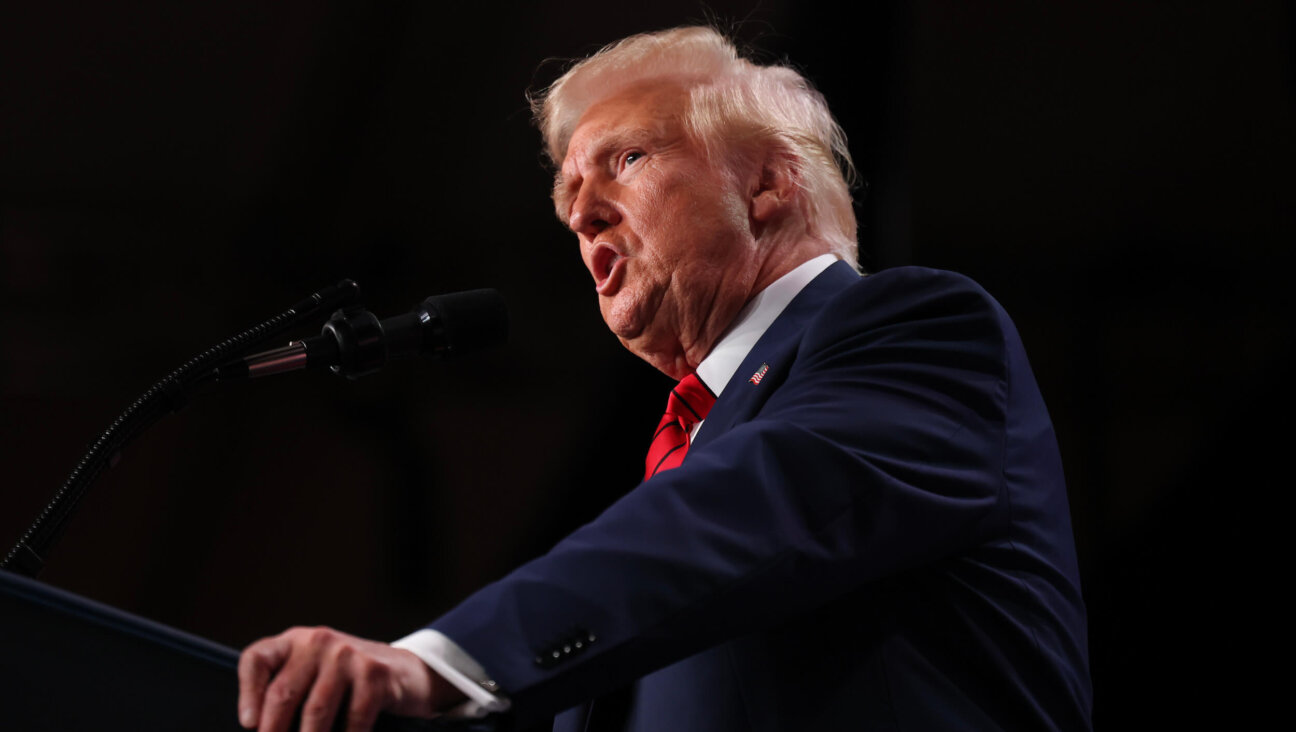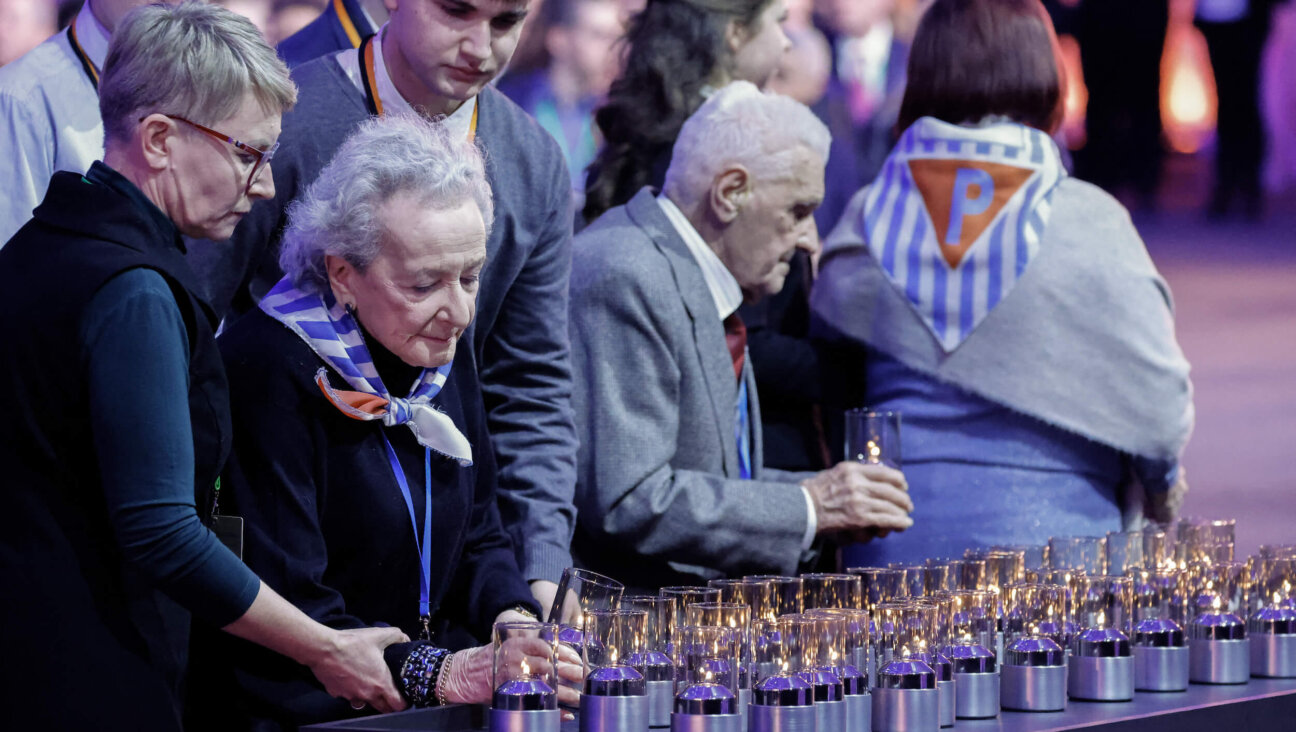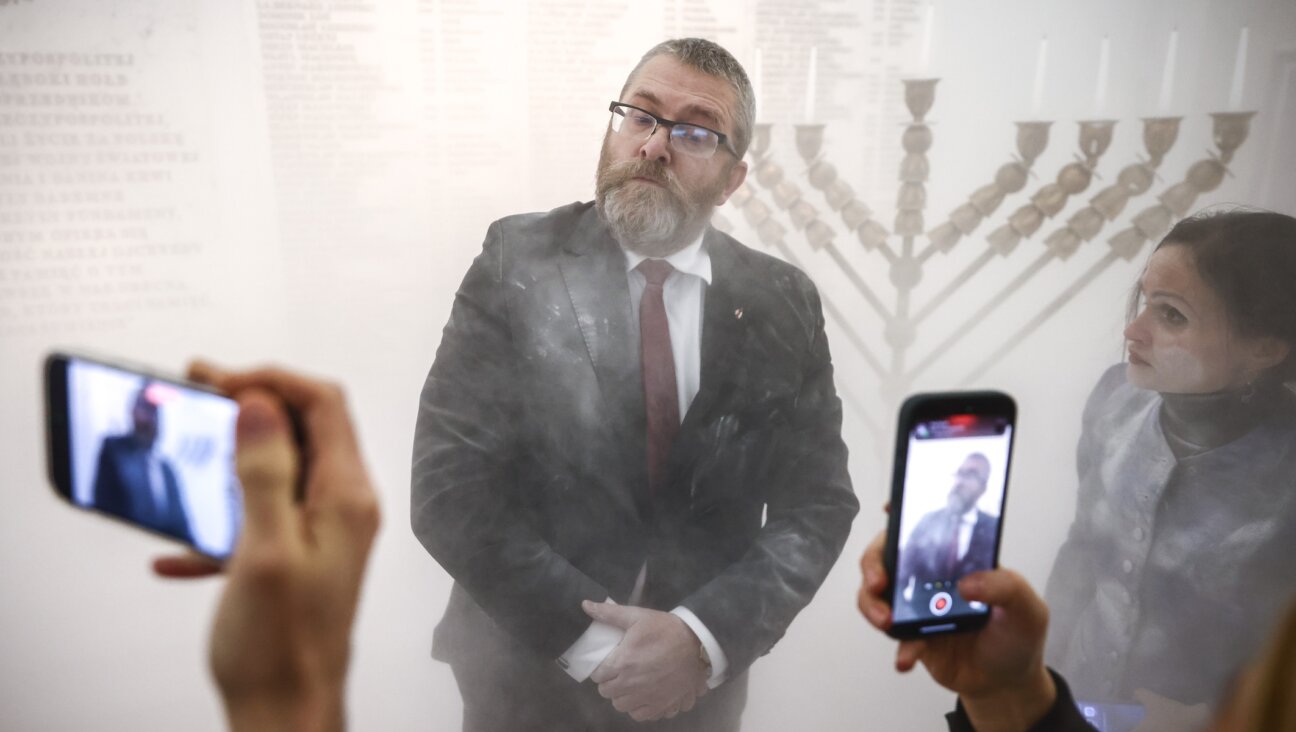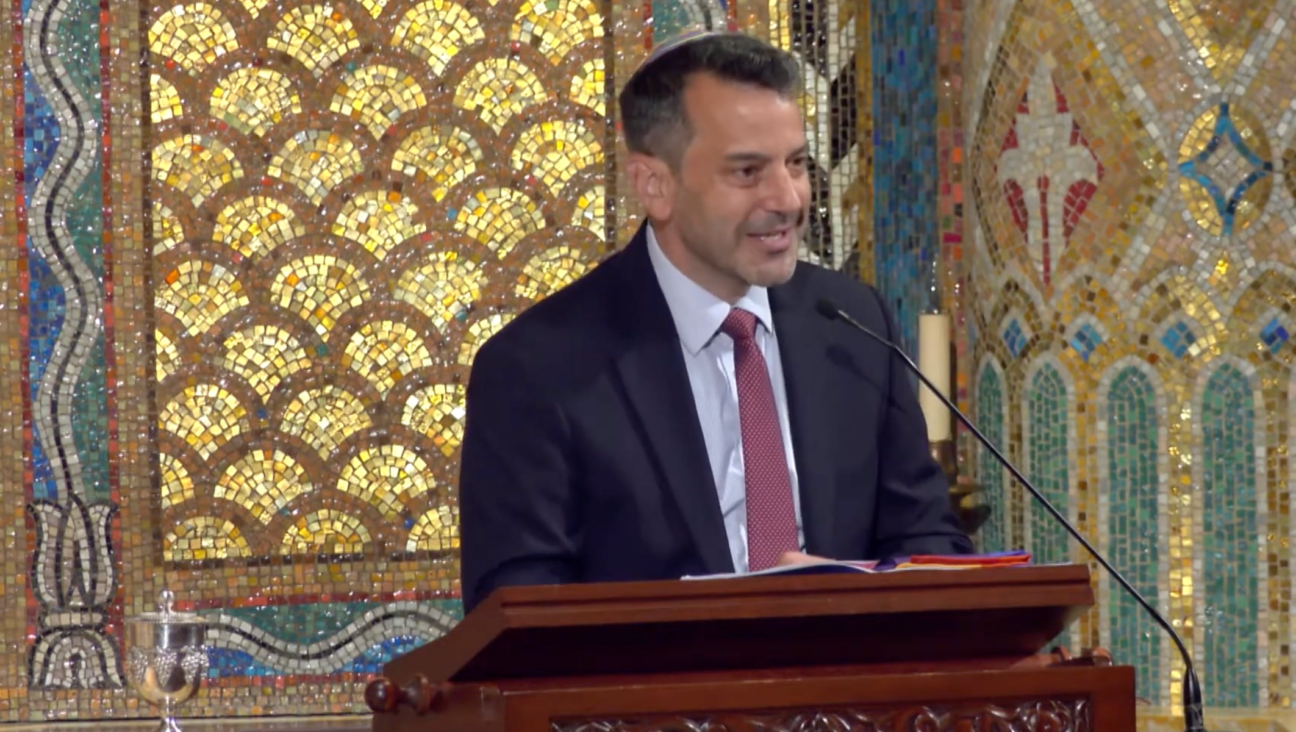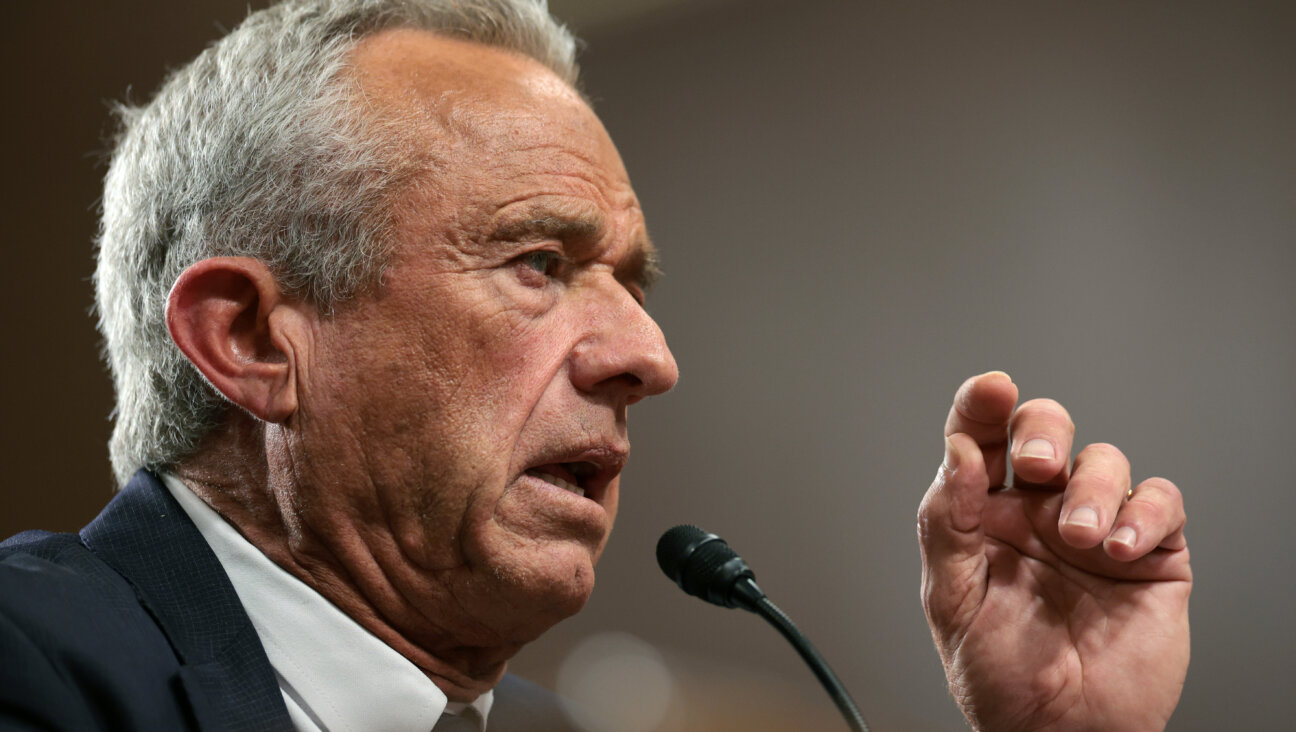Protest Is A Sacred Jewish Practice

Protesters against ICE Image by Gili Getz
Despite growing up to become a rabbi, I don’t remember much about my Hebrew School days. I remember being excited to learn the letters, and being bored reading about some people called “Babylonians” in a book that smelled like a basement.
One thing I do remember quite clearly, however, is a trip I took with my shul. It wasn’t to a museum or a baseball game. It was to Manhattan, in the late 1980s, to demonstrate publicly in a march on behalf of Soviet Jews. Piling into a yellow school bus with other Jewish teens, we arrived in midtown to find a mass of people, waving signs and banners with slogans, and hoisting high pictures of Jews tortured or detained in Soviet custody.
Mayor Koch spoke at that rally, as did both US senators from New York. But the speech I remember most clearly was that of Natan Scharansky. “Only when the last Jew is with us in freedom,” he declared, “can we relax our struggle.”
That day, and that march, was a religious experience for me. Here were hundreds of thousands of Jews, traveling from hundreds of destinations—many, like me, in yellow school buses—who had come to walk and speak and insist that people in power do the right thing. It was a holy gathering, and a holy moment.
Last year, a group of us here in the Boston area began discussing an action centered around Tisha B’Av, the Jewish national day of mourning. Picking up on the day’s public reading of ”Eicha”, the book of Lamentations, we decided to call it “Confronting Catastrophe: A Public Lament for our Broken Immigration System.”
Serendipitously, the rabbinic human rights organization T’ruah had begun discussing the possibility of holding similar actions in other locations. We decided to hold the ritual at the regional ICE office, a factory of despair housed in a pedestrian office building nestled among cafes and shopping malls in the nondescript suburb of Burlington.
We had been conducting “Jericho Walks” at the Burlington ICE office for months, walking in solidarity with immigrants who had faithfully showed up for their hearings. We celebrated with those who had been given a reprieve by the ICE functionaries, embraced and wept with those who had learned of their imminent deportation.
But those demonstrations were attended by people of all religions—and some of no religion. Would Jews show up on a sunny summer Sunday, in an empty parking lot, to cry and mourn over what our country was perpetrating on our immigrant friends and neighbors?
As it turned out, the answer was “Hell yeah.” 300 people showed up. We cried and sang together, held each other and pledged to stay in the struggle for justice. Like that day 30 years before in Manhattan, we insisted that people in power do the right thing, not just for Jews, but for everybody.
And, like that day, it was a holy gathering and a holy moment.
This year, I was so gratified to see the idea spread across the country. In over 50 cities around the US, Jews observed Tisha B’Av by lamenting the brutal and cruel treatment of refugees and immigrants. Locally, we moved our commemoration to the JFK Federal Building in downtown Boston. 500 people attended.

Jewish people protesting against ICE. Image by Michael Rothbaum
All across the country, the Jewish community spoke in a clear voice: We will meet heartbreak with hope and resolve. We did it on a specifically Jewish day. We did it in the context of Jewish ritual.
For me, this was even more moving because, until we revived the commemoration a few years ago, our shul had not observed Tisha B’Av. Not everyone saw the relevance of such an ancient ritual, mourning for the destruction of a building that hadn’t stood in two millennia. After all, didn’t Jews return to Jerusalem in 1967?
It was in the context of our tragic American moment, characterized by xenophobia and bloodshed, that Tisha B’Av became relevant for many of us. In consecutive years, dozens of our congregants have showed up not only in Burlington and Boston, but in commemorations of Tisha B’Av in our shul on the previous night. The words of Eicha jumped off the page as indictments of a country that’s forfeited any claim to a moral voice. People who never had observed this Jewish ritual found it painfully relevant.
Nationally, some members of the Jewish community have derided our engagement with the struggle for social justice. Marches and rallies, they sneer, are no substitute for real Jewish practice.
To those who say justice work is a distraction from ritual, I can only say: Next time, join us. You will see that you are mistaken. You will see the sacred power of Jews joined together, performing Jewish rituals, upholding our most cherished values. Like I did 30 years ago in Manhattan, like I did last week in Boston, you will see those values come to life. You will see that these moments are holy moments.
Connecting Tisha B’Av to immigration, many of our congregants heard Eicha chanted for the first time. Some of them heard of Eicha for the first time. The musty textbook stories of Babylonians came to life, as we confronted the pain of living in modern-day Babylon. Our shul went from not commemorating the day at all, to having dozens of people participate.

Rabbi Michael Rothbaum among other spiritual leaders at an ICE protest. Image by Michael Rothbaum
Jewish rituals like participating in Passover Seder, dwelling in a sukkah, or even making kiddush emphasize familiar themes: the power of memory, the insistence on fairness, the stubborn refusal to deny holiness in this world. Tisha B’Av is no different.
The turnout of Jews across the country this Sunday shows that the struggle for justice is not a distraction from Jewish ritual. It is its fulfillment.
Rabbi Michael Rothbaum is spiritual leader of Congregation Beth Elohim in Acton, MA and a member of T’ruah: The Rabbinic Call for Human Rights. He lives in Maynard with his husband, Yiddish singer Anthony Russell.
A message from our Publisher & CEO Rachel Fishman Feddersen

I hope you appreciated this article. Before you go, I’d like to ask you to please support the Forward’s award-winning, nonprofit journalism so that we can be prepared for whatever news 2025 brings.
At a time when other newsrooms are closing or cutting back, the Forward has removed its paywall and invested additional resources to report on the ground from Israel and around the U.S. on the impact of the war, rising antisemitism and polarized discourse.
Readers like you make it all possible. Support our work by becoming a Forward Member and connect with our journalism and your community.
— Rachel Fishman Feddersen, Publisher and CEO









